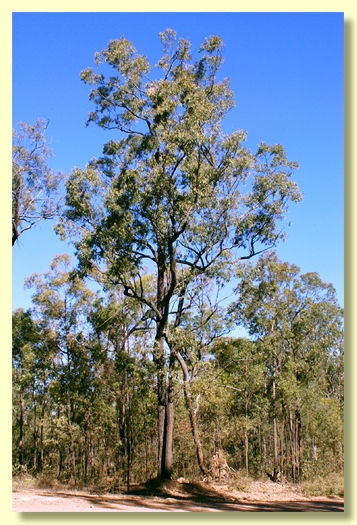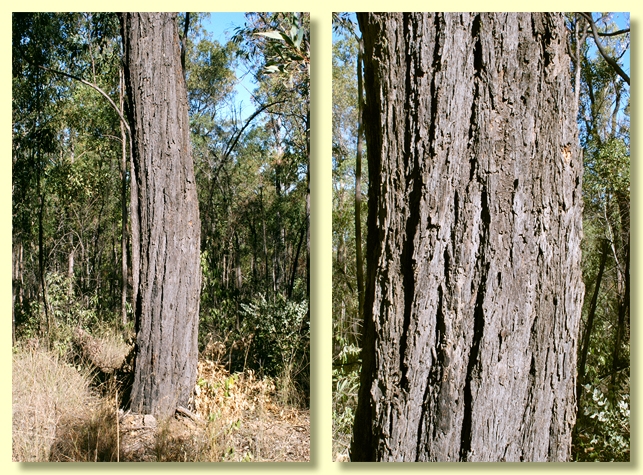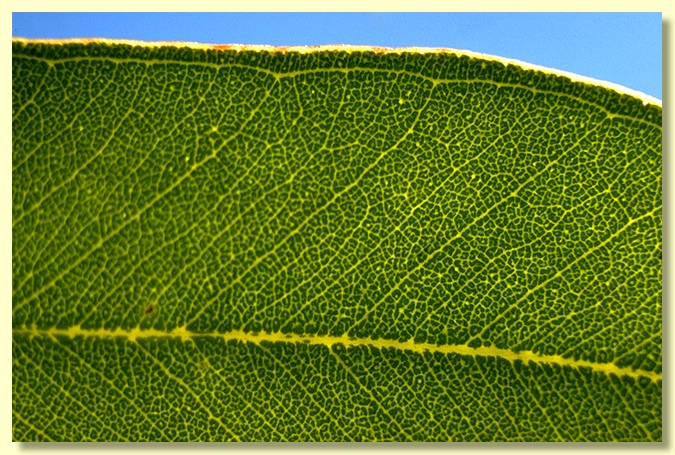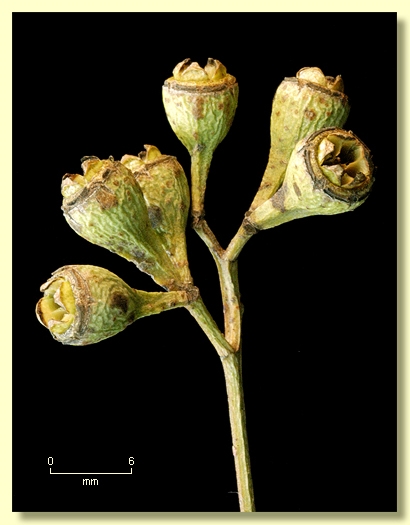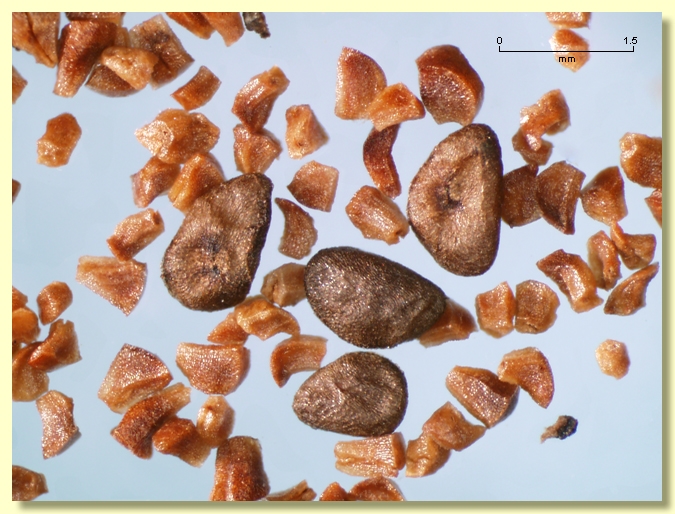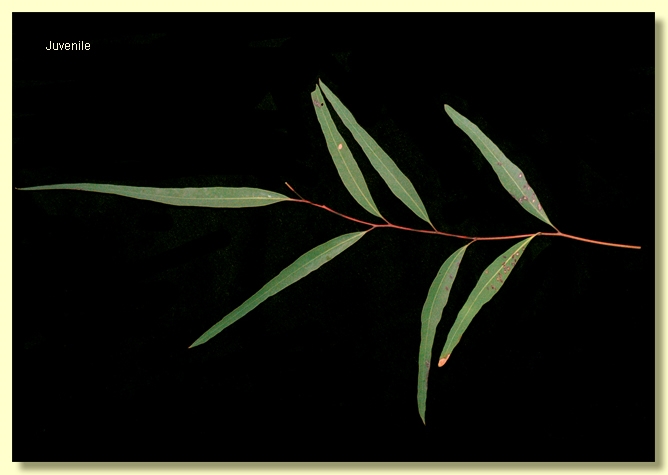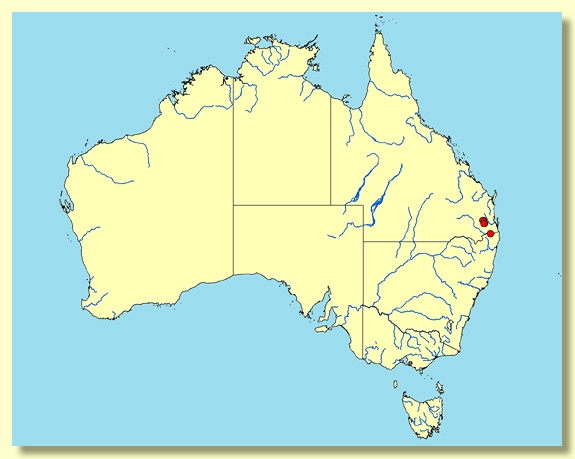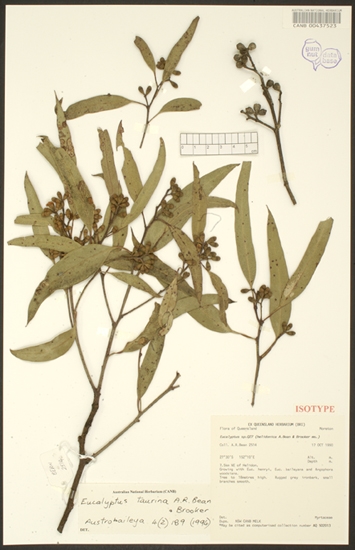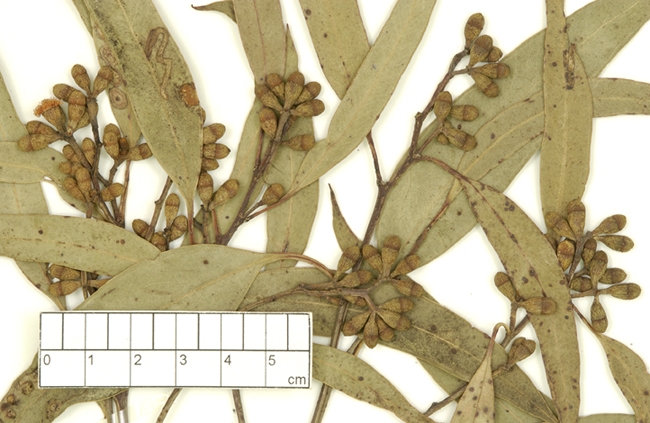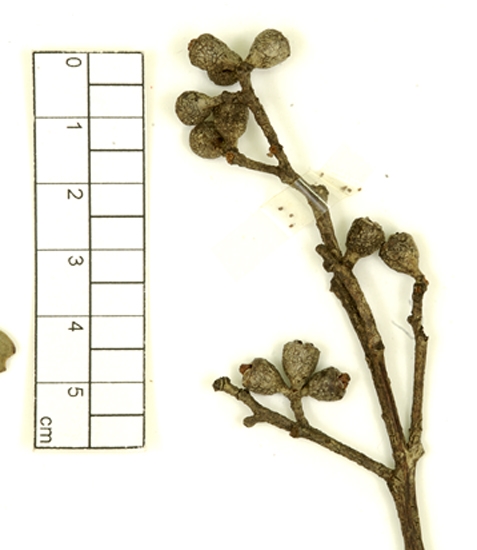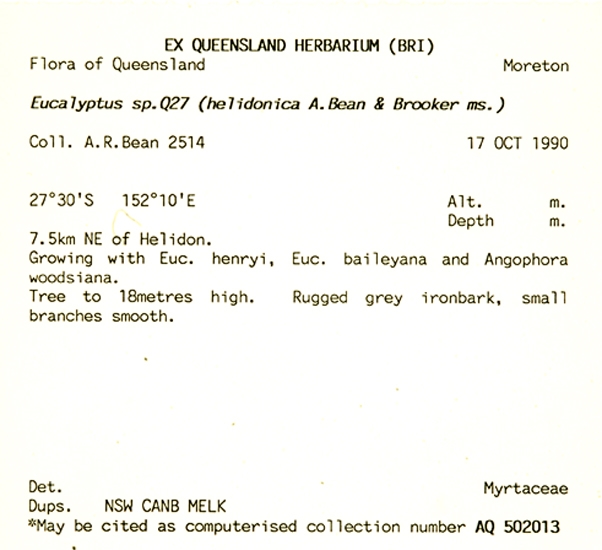Euclid - Online edition
Eucalyptus taurina
Eucalyptus | Symphyomyrtus | Adnataria | Apicales | Siderophloiae | Subglaucae
Tree to 22 m tall. Forming a lignotuber.
Ironbark to the small branches, dark grey to black, sometimes larger branches 8 cm diameter or smaller with smooth bark.
Juvenile growth (coppice or field seedlings to 50 cm): stem square in cross-section; juvenile leaves petiolate, alternate, lanceolate, 8–14 cm long, 1.4–3 cm wide, base tapering to petiole, green and strongly discolorous.
Adult leaves alternate, petiole 1–2.5 cm long; blade lanceolate, 7.5–15 (18) cm long, 1.5–3 cm wide, base tapering to petiole, concolorous to slightly discolorous, glossy to dull, green, side-veins at an angle greater than 45° to midrib, densely to very densely reticulate, intramarginal vein parallel to and just within margin, oil glands sparse intersectional or absent.
Inflorescence terminal compound or axillary single umbels, peduncles 0.4–0.7 cm long, buds 7 per umbel, sessile or on pedicels to 0.5 cm long. Mature buds ovoid to fusiform to ± cylindrical, 0.6–0.8 cm long, 0.3–0.4 cm wide, scar present (first operculum sheds very early in bud development), operculum bluntly conical to rounded, stamens irregularly flexed, anthers cuboid, adnate, slits or pores separate, style long, stigma blunt or pin-head shaped, locules 4, the placentae each with 4 vertical ovule rows. Flowers white.
Fruit sessile or on pedicels to 0.5 cm long, cup-shaped to obconical to hemispherical, 0.5–0.7 cm long, 0.5–0.7 cm wide, disc raised-convex to oblique to annular or level, valves 4, exserted.
Seeds brown, 1.5–2 mm long, flattened-ovoid, dorsal surface shallowly reticulate, hilum ventral.
Cultivated seedlings (measured at ca node 10): cotyledons oblong to reniform; stems square in cross-section; leaves always petiolate, opposite for 4–6 nodes then alternate, broadly lanceolate, 7.5–11 cm long, 3–7 cm wide, base tapering, margin entire, apex pointed, slightly discolorous, dull, grey-green.
Flowering has been recorded in October and November.
A medium-sized to tall ironbark tree known only from two areas in Queensland just west of Brisbane from the Helidon–Crows Nest–Gatton area and an area just south-west of Rathdowney near the Queensland–New South Wales border.
Eucalyptus taurina is closely related to E. ophitica, E. tholiformis and E. beaniana. All four species have more or less oblong to fusiform buds with a bluntly conical to rounded operculum. They are weakly separated by the shape and size of their juveniles. E. taurina has lanceolate juveniles 1.4–3 cm wide, E. ophitica has broad lanceolate juveniles 3–7 cm wide, E. tholiformis has ovate juveniles 2.2–4 cm wide and E. beaniana has linear juveniles 0.4–0.6 cm wide.
Within its area of occurrence it may be confused with E. decorticans, E. siderophloia, E. rhombica, E. crebra and E. fibrosa. E. taurina differs from E. crebra by having much broader adult and juvenile leaves, the more elongated buds with a round operculum, and fruit with slightly exserted valves. It has smaller buds and fruit than E. fibrosa and lacks the long horn-shaped operculum and the prominent exserted valves of that species. E. siderophloia, E. rhombica and E. decorticans differ by having diamond-shaped buds with an acute operculum.
All other ironbark species in its area of occurrence belong to the group of ironbarks in which the buds have inflexed stamens and have an outer whorl of staminodes.
MORE ABOUT IRONBARKS
Eucalyptus taurina: Latin taurinus, of bulls, referring to an encounter by the first author when he first saw this species.

